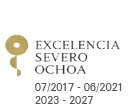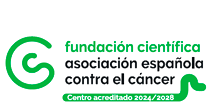Activity Detail
Christmas Lecture
Nanomedicine: Two decades inspiring the next. Can radiochemistry lend a hand?
Jordi Llop, PhD
 The application of nanotechnology to the medical field, particularly for the treatment of complex diseases in which conventional medicines lack treatment or diagnostic efficacy, has been proposed during the last two decades. Nanoparticles (NPs) have a high surface-to-volume ratio and the capacity to be loaded with therapeutic and targeting agents; hence they can, theoretically, deliver cargo selectively to the site of action, increasing thus the therapeutic efficacy while reducing undesired side effects. The promising properties of NPs and the wide range of opportunities resulting thereof have not resulted in apparent clinical advantages, neither in the diagnostic nor in the therapeutic arenas. This lack of translation from bench-top to bed-side is probably the result of a combination of factors, including scale-up and batch-to-batch reproducibility issues, as well as the lack of reliable toxicological and pharmacokinetic (PK) data. Labelling NPs with positron or gamma emitters may constitute an ideally suited alternative to track NPs in vivo using nuclear imaging techniques, i.e. positron emission tomography (PET) or single photon emission computerised tomography (SPECT), in order to investigate biodistribution and biological fate. These imaging modalities are considered as minimally invasive and allow time-resolved and quantitative determination of the amount of labelled species within the organism. Attractively, due to the high penetration capacity of gamma rays, they can be easily translated from small experimental animals to humans without significant tissue-attenuation related issues. During the last years, the Radiochemistry and Nuclear Imaging Group at CIC biomaGUNE has been working in the development of radiolabelling strategies, suitable for the incorporation of positron or gamma emitters in selected NPs. With the ultimate goal of providing appropriate tools for the assessment of PK properties of NPs, specific applications in the fields of nanotoxicology and nanomedicine have been approached. In this lecture, the different labelling strategies will be discussed, as well as their advantages, limitations and potential applications. The necessity to move from single labelling to multi-labelling will be also covered in the context of ongoing and future research projects.
The application of nanotechnology to the medical field, particularly for the treatment of complex diseases in which conventional medicines lack treatment or diagnostic efficacy, has been proposed during the last two decades. Nanoparticles (NPs) have a high surface-to-volume ratio and the capacity to be loaded with therapeutic and targeting agents; hence they can, theoretically, deliver cargo selectively to the site of action, increasing thus the therapeutic efficacy while reducing undesired side effects. The promising properties of NPs and the wide range of opportunities resulting thereof have not resulted in apparent clinical advantages, neither in the diagnostic nor in the therapeutic arenas. This lack of translation from bench-top to bed-side is probably the result of a combination of factors, including scale-up and batch-to-batch reproducibility issues, as well as the lack of reliable toxicological and pharmacokinetic (PK) data. Labelling NPs with positron or gamma emitters may constitute an ideally suited alternative to track NPs in vivo using nuclear imaging techniques, i.e. positron emission tomography (PET) or single photon emission computerised tomography (SPECT), in order to investigate biodistribution and biological fate. These imaging modalities are considered as minimally invasive and allow time-resolved and quantitative determination of the amount of labelled species within the organism. Attractively, due to the high penetration capacity of gamma rays, they can be easily translated from small experimental animals to humans without significant tissue-attenuation related issues. During the last years, the Radiochemistry and Nuclear Imaging Group at CIC biomaGUNE has been working in the development of radiolabelling strategies, suitable for the incorporation of positron or gamma emitters in selected NPs. With the ultimate goal of providing appropriate tools for the assessment of PK properties of NPs, specific applications in the fields of nanotoxicology and nanomedicine have been approached. In this lecture, the different labelling strategies will be discussed, as well as their advantages, limitations and potential applications. The necessity to move from single labelling to multi-labelling will be also covered in the context of ongoing and future research projects.





